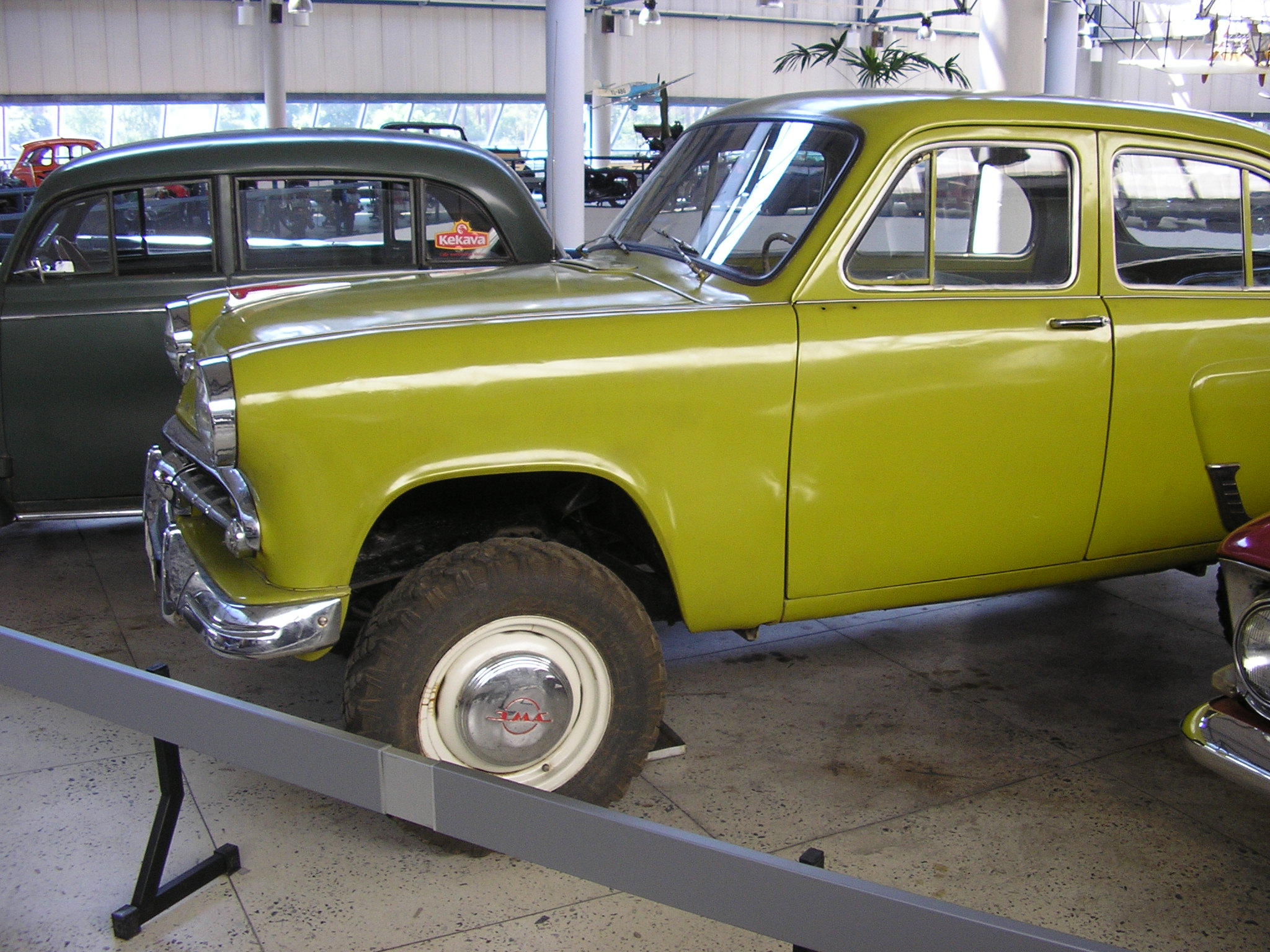Ukorachivaem Most Moskvich

Moskvitch-400-420A interior The Moskvitch 400-420 was a introduced in 1947 by the manufacturer. In 1940 and 1941 500 units of the, the first Soviet, were produced. It was inspired by the similar-sized four-door and despite its low price equipped with such features as a mechanical clock and indicators of the level of oil and the temperature of water in the radiator, but national priorities changed with the in Summer 1941, and the production of the new car was not resumed after the war. It was who personally chose in June 1945 a four-door to become a first mass-produced popular Soviet car, so plans and tooling of a four-door version had to be reconstructed with help of German engineers, who worked upon them in a Soviet occupation zone. The Soviet Union was not the only country to adopt the design at that time: the Kadett had impressed and heavily inspired his produced in 1937-1960. Development began in 1944, following a prewar plan to produce a domestically built car able to be used and maintained by citizens living outside major cities.
The factory was selected to build the car, with the prewar (not built due to the ) as a basis, with production approved in May 1945 and prototypes intended to be ready in December; by the end of May, however, these plans had faltered. At war's end, the deemed the plans and tooling for the 1939 as part of the war reparations package, since the tooling in the factory was largely intact; residents dismantling the Kadett production tooling and loaded fifty-six freight cars, bound for Moscow and the newly built 'Stalin Factory' (ZIS). However, according to recent Russian sources, the Kadett plans and tooling were in fact not captured from the factory, because they did not survive there (and what survived was appropriate for producing a two-door model). In any event, after KIM was renamed (Moscovskiy Zavod Malolitrazhnyh Avtomobiley, Moscow Factory for Making Small Cars) in August 1945, the new car was ready for production before the end of 1946 (somewhat behind the planned June deadline): the first 400-420 was built 9 December, '400' meant a type of engine, [ ] and '420' the (saloon) body style.
1980 MOSKVICH 412 - $19,500 1980 Moskvitch 412 Sedan For Sale or Trade Remarkable time capsule, this original Soviet sedan turns heads wherever. More Add to Favorites More. Nov 03, 2015 1980 Moskvitch 412, Overview, AlphaCars & Ural of New England. The Most Significant 4-cylinder Bikes in History!!! 1980 Moskvich 412.
With construction, front suspension, three-speed manual transmission. And hydraulic brakes, it was powered by a 23 (17; 23 ) 1,074 cc (65.5 cu in) (with a of 5.6:1).
Acceleration 0–50 mph (0–80 km/h) took 55 seconds, and achieved 9 L/100 km (31 mpg ‑imp; 26 mpg ‑US) (the best of any Soviet car at that time). With a of 2,340 mm (92 in)) and ground clearance of 200 mm (7.9 in)), it measured 3,855 mm (151.8 in) long overall 1,400 mm (55 in) wide, 1,550 mm (61 in) tall. Approved for mass production by the Soviet government on 28 April 1947, 1,501 were built the first year, with 4,808 for 1948 and 19,906 in 1949, the same year a mesh was introduced.
In 1951, was introduced on the top two gears, and the gear lever relocated to the. In 1948, a, the 400-422, with an 800 kg (1,800 lb) payload, went into production but the similar prototype 400-421 and a pick-up never did. The 400-420A debuted in 1949. KIM 10-50, rejected in favour of the Opel Kadett Most of the Opel tooling removed to Russia was for the two-door Kadett model, and the Russians converted this into a 4-door configuration that visually was near identical to the original Kadett 4-door.  Although Opel was U.S. Property, GM did not recover control of the factory until 1948 and were therefore unable to contest the transfer. The 400 went on sale in Belgium in October 1950, making it a very early Soviet automotive export product, priced at 349: below the and, and well below the. Linux 2 &1.
Although Opel was U.S. Property, GM did not recover control of the factory until 1948 and were therefore unable to contest the transfer. The 400 went on sale in Belgium in October 1950, making it a very early Soviet automotive export product, priced at 349: below the and, and well below the. Linux 2 &1.
Motor praised its engine's quietness, the calibre of its finish, and the quality of the ride. The 100,000th Moskvich was built in October 1952. Several prototypes were also built. In 1949, proposal for an improved 26 (19; 26 ) 401E-424E and a 33 (25; 33 ) 403E-424E saw only six examples built.
Following this, in 1951, the factory produced the 403-424A with a 35 (26; 35 ) four. The 'stunning' of 1954 used a new 58 (43; 59 ) engine. Moskvitch 401 [ ] Moskvitch 401. 1949 Moskvich 401-424E Overview Manufacturer Production 1954-1956 Assembly Powertrain 1.1L MZMA-400 I4 3-speed manual Chronology Predecessor Moskvitch 400-420 Successor The Moskvitch 401 (full designation: Moskvitch 401-420) was introduced in 1954, an improved variant of the 400-420.